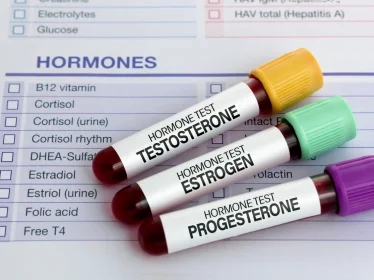NOSEBLEEDS IN CHILDREN
WHY DO OUR NOSES BLEED?
A nosebleeds (also known as epistaxis) can be scary but usually cause no harm to children. Children usually bleed from the superficial and thin blood vessels that can be seen at the front portion of the nose on the septum, just behind the nostrils.

Figure 1. Cross-section of the nasal septum. Many blood vessels converge in the inner lining at the front portion of the nose
COMMON CAUSES OF NOSEBLEEDS
The most common reasons of nosebleeds are dryness of the nasal lining, nose-picking, allergies, colds and injuries. Rarely, they are due to bleeding disorders or tumours. Nose-picking may also increase the frequency of nosebleeds.
The dryness of the nasal lining can also be triggered through frequent exposure to air-conditioning, which increases the risk of nosebleed.
Nosebleed from the thin, superficial blood vessels may last till puberty. After puberty, nosebleeds usually decrease as the nose lining thickens from hormonal changes.
WHEN DO I SEEK HELP?
It is not likely to be of serious concern if your child’s nose bleeds only once every few months. However if it happens regularly, for example, four to five times a month, your child should be reviewed by a specialist to rule out any of the rarer causes, especially if your child is not sleeping in an air-conditioned room.
WHAT SHOULD I DO WHEN MY CHILD’S NOSE BLEED?
When your child’s nose bleeds, ask him to sit up, lean forward and pinch the lower soft portion of the nostrils together for five to ten minutes, while breathing through his mouth. (Figure 2). An ice pack can be laid across the nose bridge and the forehead or on the cheek to allow for reflex constriction of the tiny blood vessels.
The majority of the nose bleeding should stop during this time. If it restarts, compression can be applied again for another 10 minutes. The idea is to keep the heart lower than the nose so blood flows back to the heart and not to the bleeding area.
- Pinch your child’s nose tightly at the front soft portion (Or you can teach him to do this himself)
- Bend his head slightly forward to allow him to spit out nay swallowed blood through the mouth
- The child is instructed to breathe through his mouth during the manoeuvre

Figure 2. Child pinching together the softer portion of her nose to stop nose bleeding. Instruct the child to breathe through her mouth and spit out any swallowed blood in the mouth
WHAT OTHER MEASURES MAY HELP IN REDUCING MY CHILD’S NOSEBLEEDS?
- Apply petroleum jelly (like Vaseline) with cotton buds to both sides of the nasal septum before bedtime
- Advise your child against frequent nose-picking to prevent trauma to the affected area
- Use a humidifier in your child’s room to reduce the drying effect of air-conditioning
- Consult an ENT surgeon who may cauterise (seal off) the affected area with chemicals or electric current. This does not guarantee that your child will never have a nosebleed again. However, if the child refrains from nose-picking and other predisposing factors, this procedure allows for a six-month to eighteen-month of symptom-free period.





